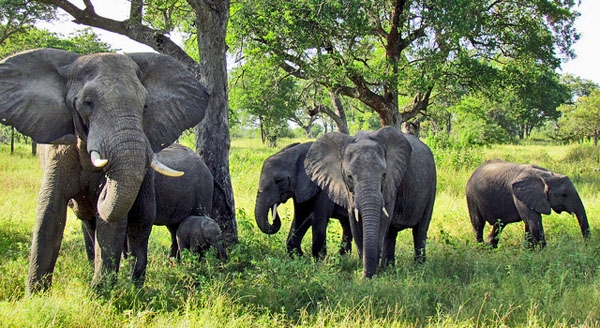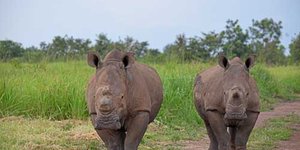Like this article?
Go on, give it a kudu!

Published on June 28 2013
Written by:
Fran
959 views
In less than a decade, South Africa’s once healthy rhino population went from well protected and fairly safe, to a critically small population with fears of extinction in the near future. And now, there is reason to believe that South Africa’s elephant population could follow the exact same route. Warnings are out that poachers can start to close in on the southern tip of Africa’s elephants, and if the rapid pace of rhino poaching is anything to go by, we are in for a major poaching war.
The object of elephant poaching is elephant tusks. The young elephants are spared, for tusks only replace the young elephant’s milk teeth between the age of six months and a year old. Serving important life support functions including tree debarking, digging for water and self-defense, an elephant’s tusk can grow up to seven inches per year. Both male and female elephants can have tusks of impressive lengths, up to ten feet! Sadly, it is this pride of the elephant that is putting the individual elephant and the species as a whole, at great risk.
Last year was the worst year for elephant poaching in Africa. Elephant monitoring officials estimated that 25,000 elephants fell prey to poachers and a huge number of young elephant orphans were left behind. Killed illegally for their ivory tusks, the predominantly Asian ivory trade market is fuelling a never-ending threat. At their conference held in Bangkok earlier this year, CITES (Convention on International Trade in Endangered Species of Wild Fauna & Flora) announced the shocking reality that elephants may soon be gone in West and Central Africa due to the severe and continued poaching onslaught.
Conservationists and international animal welfare experts are now predicting that the elephant’s fate may very well follow the critical rhino poaching struggle. For many decades, South Africa was a heaven for Africa’s rhino, and at one stage South Africa was home to 70% of the entire continent’s rhino population. But as poachers thinned out rhino populations in the rest of the continent, they turned their attention south. And since then, South Africa with its compilation of wildlife including rhino, has not been able to halt the brutal rhino killings. With all conservation and anti-poaching efforts being focused on the remaining rhino population, to the extent of protecting each individual rhino, the field is open for poachers to take our elephants. The sharp increase in elephant poaching confirms that the illegal ivory trade is nowhere near slowing down. Although illegal killings whether for rhino horn or the ivory market need little encouragement and strengthening, there is also further concern that Africa’s increasing Asian business and investment influence and relations could pave the way for even smoother poaching syndicates.
Elephants once roamed freely and throughout the entire African continent. The African elephant previously had to overcome not only poaching, but also the killing of elephant for human and human settlement protection. This nearly drove the South African elephant population to extinction and in 1920, a mere 120 elephants were recorded for the whole of South Africa. With conservation protection and designated elephant conservation areas, South Africa’s elephant population made a good recovery to a fairly safe population of approximately 10,000 elephants spread across South Africa’s game parks and protected areas.
Carefully considering the rhino poaching situation and how it evolved, one cannot otherwise but to suspect that South Africa’s elephant population would be the next target for the illegal ivory trade market. And it is for this reason that warnings are slowly, but surely, reaching South Africa.
Photo credits: some rights reserved by David Berkowitz via flickr [Creative Commons].
Has been on: 11 safaris
Seeing beyond the average tourist routes and experiencing local life is my type of travel! Living in South Africa I'm an environmentalist at heart, and I continue to marvel at the beauty of the African continent.
© Your African Safari Ltd, All rights reserved.
Your African Safari is a safari-planning and safari review site. It was created to help support a healthy African wildlife population. All reviews are vetted before being approved and only ethical tours are published

Garamba National Park—an anchor of hope in the Democratic Republic of Congo
Published on January 09 2025
By: R.W.

Namibia imposes new visa requirements
Published on July 25 2024
By: yourafricansafari.com

Do I really need travel insurance or travel protection for my safari?
Published on July 30 2024
By: yourafricansafari.com